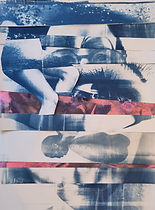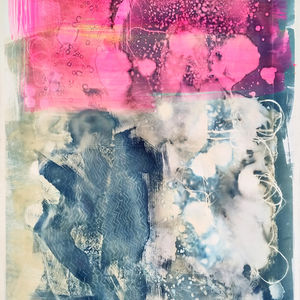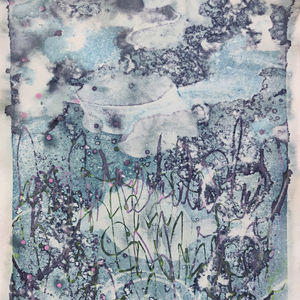
CYANOTYPES
PLASTIC ERA
Plastic – A Symbol of Progress, Excess, and Environmental Impact
In this series of works, I artistically engage with this ambivalent material that shapes our world while simultaneously sparking controversy. Positioned between loss and the search for beauty, I explore the theme using the traditional photographic printing technique of cyanotype. The artworks depict plastic waste in combination with natural objects.
Through an experimental approach—including painting, bleaching, multiple exposures, or toning the prints—unusual color tones and diverse forms emerge, expanding the boundaries of classic cyanotype. The interplay between artificial waste and nature not only highlights contrasts but also encourages reflection on the relationship between humans and the environment. The series invites viewers to rethink beauty and aesthetics—especially where they might least expect to find them.
A cyanotype is not created with a camera but as a contact print: either as a photogram, where opaque or translucent objects are placed on sensitized paper and captured along with their shadows as a negative, or as a direct reproduction of a translucent negative, resulting in a 1:1 blue-and-white positive. This type of "handmade" photography has a unique aesthetic—at least in our time. However, in the mid-19th century, the intense blue tone of the images was considered unsuitable for the typically brown-toned portraits and landscape photographs.
In contrast, from the 1870s to around 1950, cyanotype saw its greatest worldwide use as a reproduction technique for architectural plans and technical drawings (source: haupt.ch). This gave rise to the term "blueprint."
















